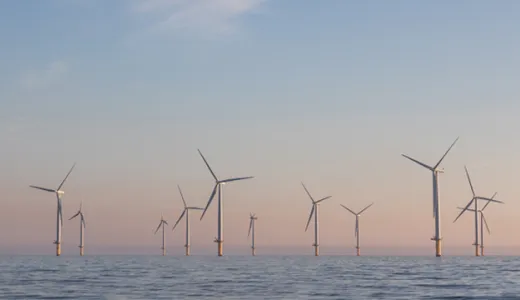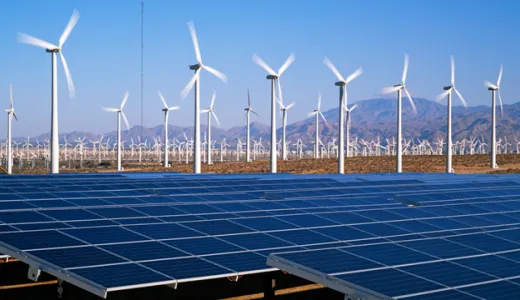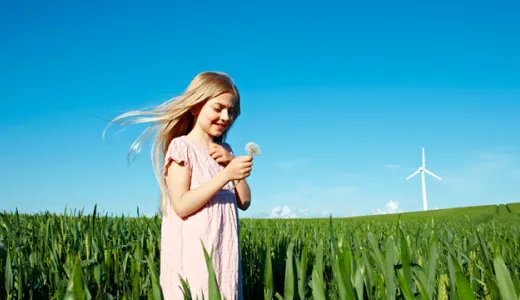What is the clean energy transition?
The clean energy transition (often referred to as the energy transition) refers to the process of shifting energy production away from sources that release greenhouse gases – such as fossil fuels – to those that release little to no greenhouse gases.
Find out why countries across the world are making the switch to cleaner, greener energy and how companies like National Grid are working to help make it happen.
Why do we need to transition to clean energy?
To avoid the worst effects of climate change, world leaders have stressed the need to limit global warming to 1.5°C by the end of this century.1 The UN’s Intergovernmental Panel on Climate Change (IPCC) indicates that crossing the 1.5°C threshold risks unleashing far more severe climate change impacts, including more frequent and severe droughts, heatwaves and rainfall.
To do this, the world needs to vastly reduce its emissions of greenhouse gases such as carbon dioxide (CO2). A significant amount of these emissions are generated through energy production, by burning fossil fuels to generate electricity and heat. So to reach net zero carbon emissions, this energy needs to be generated from cleaner sources that produce low, or no, CO2 emissions.
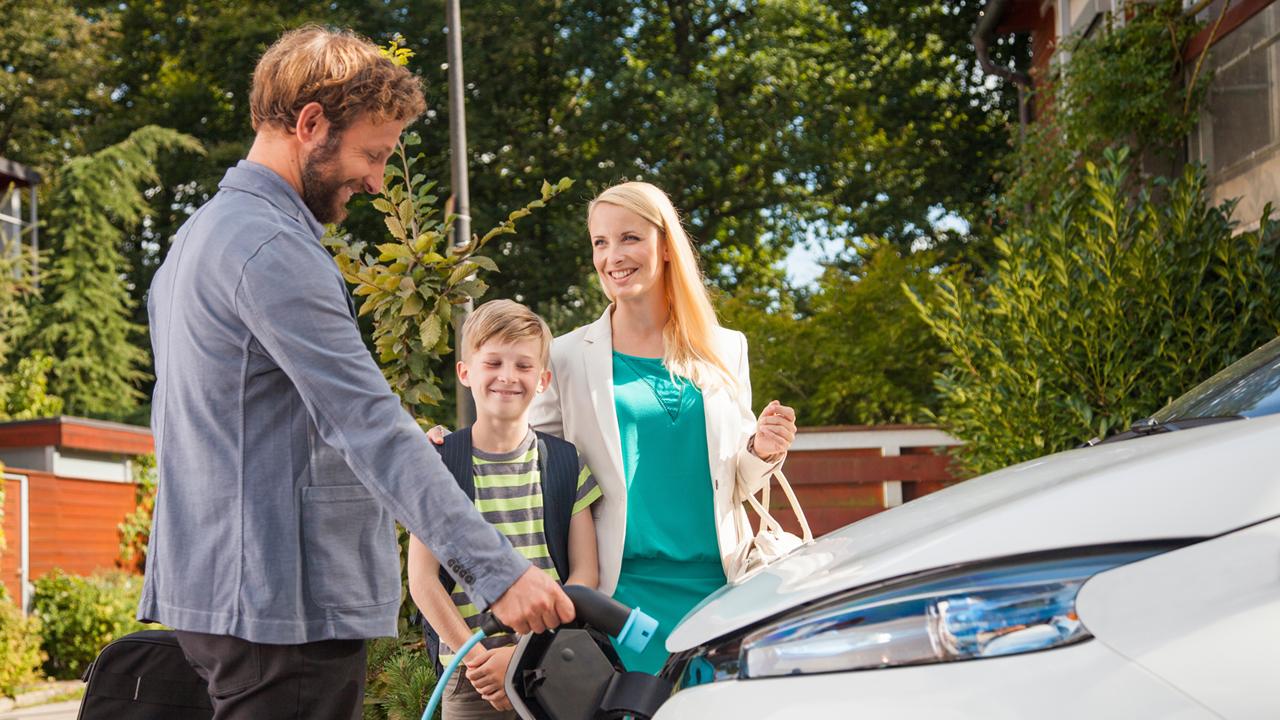
What are we transitioning from and to?
Historically, fossil fuels such as coal have made up a significant amount of the energy used globally for purposes like generating electricity, heating and cooking.
But as they are a major cause of greenhouse gas emissions, to limit the impact of climate change there needs to be a transition away from these fossil fuels and towards more clean and renewable energy sources – such as wind power and solar power.
As their name suggests, renewable energy sources are self-replenishing and won’t run out, unlike fossil fuels which are finite resources. So shifting towards renewable sources of energy will also help to ensure a more sustainable and secure energy future.
Why is it called a transition?
The term ‘transition’ is used because shifting from fossil fuels to clean energy sources can’t simply be done with the flick of a switch. It’s a gradual and complex process that requires significant infrastructure development, technological advancements and policy changes.
A successful transition needs to include the following:
1. Generating sufficient amounts of clean energy
To successfully phase out fossil fuels, there needs to be enough clean electricity available to ensure that power can continue to flow to homes and businesses.
A variety of technologies and solutions have already been adopted to convert renewable energy sources – such as wind power or solar power – into electricity. Just one example of this is offshore wind farms, which have the potential to generate huge volumes of electricity; by 2030 the North Sea alone could provide up to 120GW of offshore wind generation – enough to power over 120 million homes.
2. Connecting more clean energy to the electricity grid
In much of the western world, the infrastructure that transmits electricity was chiefly developed to serve the power stations that generated electricity by burning fossil fuels. As electricity is now increasingly coming from renewable sources, new infrastructure is needed to connect this renewable energy from where it’s generated to where it’s needed.
For example, to connect clean energy that's generated offshore, new transmission lines will be needed to bring it inland to be used by homes and businesses.
In the UK, The Great Grid Upgrade is helping to connect more clean, affordable energy to homes and businesses across England and Wales, in the largest overhaul of the electricity grid in generations.
Similarly in the US, the Upstate Upgrade is upgrading the transmission grid to building a smarter, stronger, cleaner energy grid for our customers and communities in New York.
3. Embracing clean energy in our everyday lives
As the clean energy transition progresses, we’ll all be using more electricity than ever before as the energy used for things like heating and transport is decarbonised. We’re already seeing new technologies becoming more mainstream and more familiar in day-to-day life, for example electric vehicles and heat pumps.
If clean energy is already available and being used, why can’t we just switch off fossil fuels now?
Many countries across the world are being powered by an increasing amount of clean energy, but other sources still need to play a part in the energy mix for the time being. Reasons for this include:
1. Ensuring minimal disruption to people’s lives
For many people, some important aspects of everyday life do still rely on fossil fuels and it’s likely to be a little while longer until these can be fully transitioned to solutions that use only clean energy.
One example of this is transport; currently the price point of electric cars is prohibitive for many people – plus those without off-street parking may be hesitant until more chargers are available in their local area – so they still need to use a vehicle that’s powered by petrol or diesel.
Similarly, most homes in the UK currently rely on gas boilers for their heating, a factor that can’t be quickly and easily changed across the whole population.
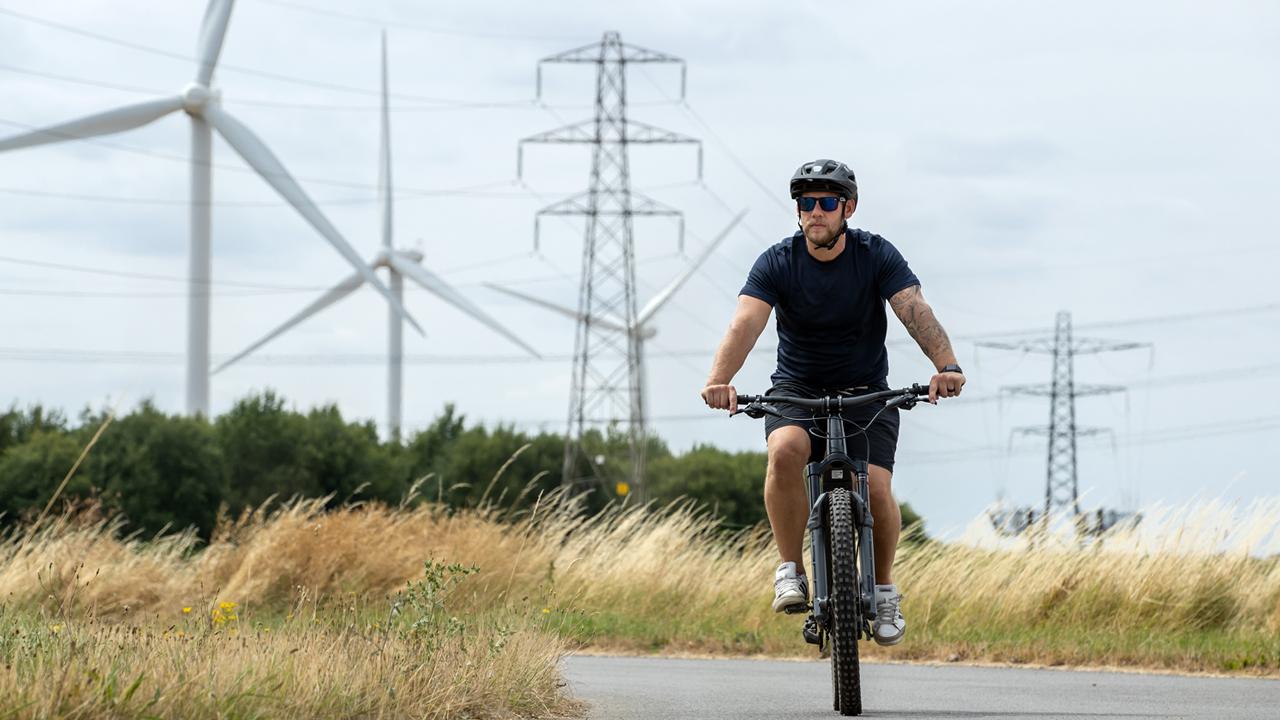
2. Making sure there’s enough clean energy available to meet demand
Renewable energy generation mainly relies on naturally-occurring factors – solar power depends on the amount of daylight, wind power on the consistency of the wind – which means that the amount of energy being generated from each source will be intermittent.
This means that, in order to ensure security of supply, there needs to be a variety of energy sources in the mix – as well as additional solutions like energy storage.
Sharing clean energy via interconnectors – high-voltage cables that connect the electricity systems of neighbouring countries – also helps to ensure that power can be available when demand is high and any excess renewable energy produced doesn’t go to waste.
3. Upgrading electricity networks to be fit for a clean energy future
Our electricity networks need to be fit for the future; carrying more clean energy from where it’s generated to where it’s needed. This process is currently taking place in many parts of the world, including The Great Grid Upgrade in the UK and the Upstate Upgrade in the Northeast US.
4. Making the benefits of the energy transition affordable and accessible to everyone
As the energy industry transitions to net zero, there is collective agreement that it must be done fairly and affordably.
In an open letter published in The Guardian, world leaders stated that: “We must prioritise just and inclusive transitions to ensure that the poor and most vulnerable can fully reap the benefits of this opportunity, rather than disproportionally bearing the cost. We recognise that countries may need to pursue diverse transition paths in line with the 1.5°C limit depending on their national circumstances.”
At National Grid, we’re committed to leading a fair transition in the areas we control, as well as advocating for change in the areas we don’t. There’s no universally agreed definition of what will make the transition fair – for us, a fair transition means that no-one is left behind as the world transitions to a clean energy future.
How will the energy transition affect my life?
As mentioned above, it’s essential that the clean energy transition benefits everyone. This is commonly referred to as a fair transition, but is also known as a just transition, climate justice or environmental justice. No matter who or where you are, your income or background, everyone should be able to benefit from the clean energy future. This includes access to clean energy, health, job opportunities and economic development.2
One major benefit of the energy transition is the economic boost it could provide, including job opportunities as part of a clean energy workforce. These aren’t just limited to engineering and construction jobs either - a huge range of skills will be required to aid in delivering net zero.
Transitioning to clean energy could also be good for your finances. The UK Treasury’s Net Zero Review suggested that the average electricity bill in 2050 for a household with an electric vehicle and a heat pump could be broadly similar, or even lower, than the average electricity, heat and transport fuel costs for a household in 2019 with an internal combustion engine vehicle and a gas boiler.
Read more: how upgrading the UK’s energy system may touch your life
Which countries are transitioning to clean energy? Is the whole world doing it at the same time?
The Paris Agreement, a legally binding international treaty on climate change, was adopted by 196 Parties at the UN Climate Conference (COP21) in Paris, France on 12 December 2015. It entered into force on 4 November 2016. The overarching goal of this agreement is to limit the increase in global average temperatures to well below 2°C relative to pre-industrial levels and pursue efforts to limit the temperature increase to 1.5°C above pre-industrial levels, by encouraging the use of low-carbon energy sources to reduce greenhouse gas emissions.
Since the Paris Agreement, more and more countries, regions, cities and companies are establishing their own targets for becoming carbon neutral. As different countries are at very different stages in terms of their energy infrastructure, levels of resilience and ability to transition to clean energy, every country’s transition will happen in different ways and over different periods of time. The UK and US have both committed to achieving net zero carbon emissions by 2050 and are aiming to decarbonise their electricity systems by 2030 and 20353 respectively.
Published: 22 Aug 2024
The information in this article is intended as a factual explainer and does not necessarily reflect National Grid's strategic direction or current business activities.
Reference sources
1 The Paris Agreement | UNFCCC
2 A fair transition: our approach and engagement
3 FACT SHEET: President Biden Sets 2030 Greenhouse Gas Pollution Reduction Target Aimed at Creating Good-Paying Union Jobs and Securing U.S. Leadership on Clean Energy Technologies | The White House
